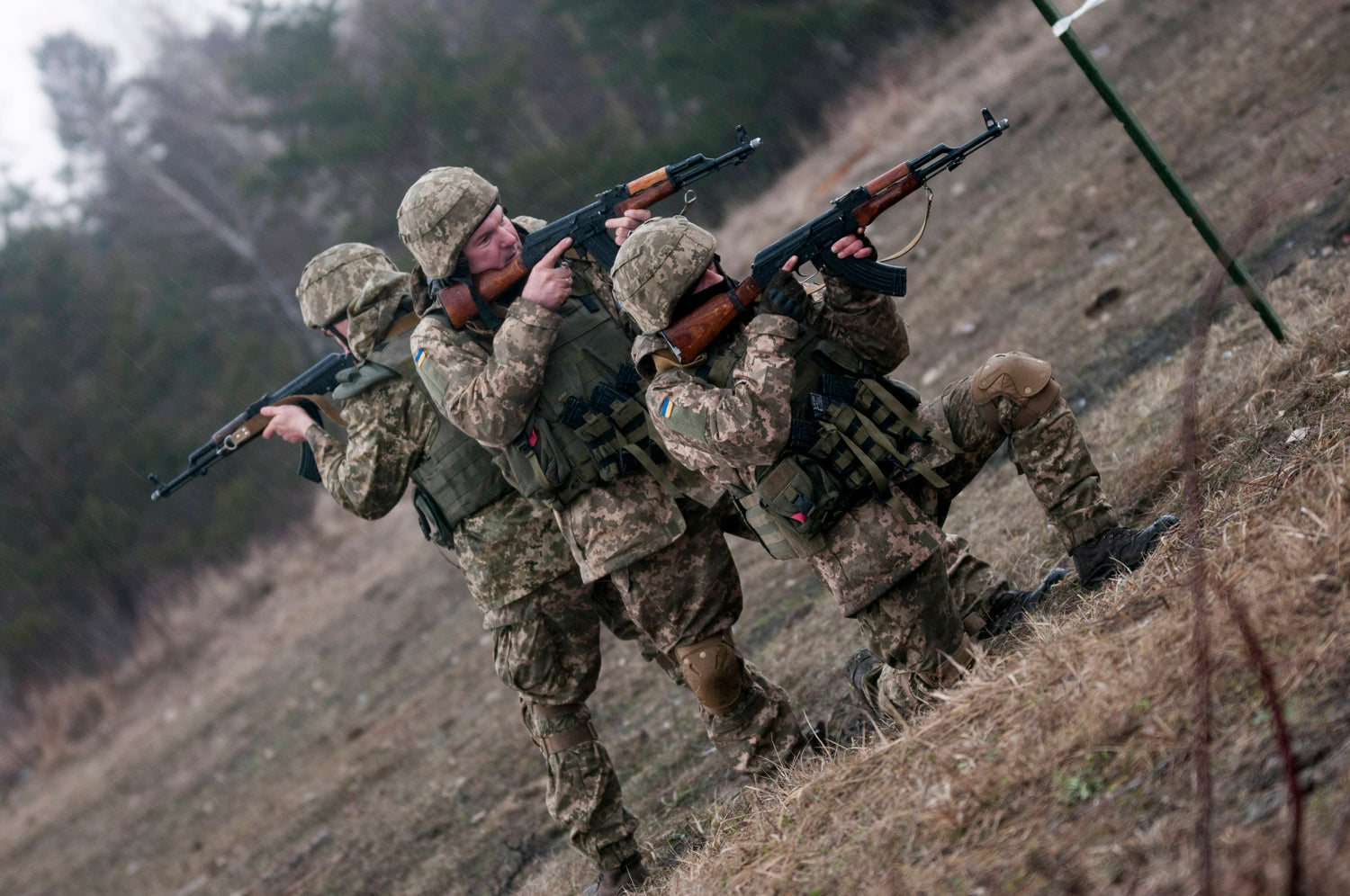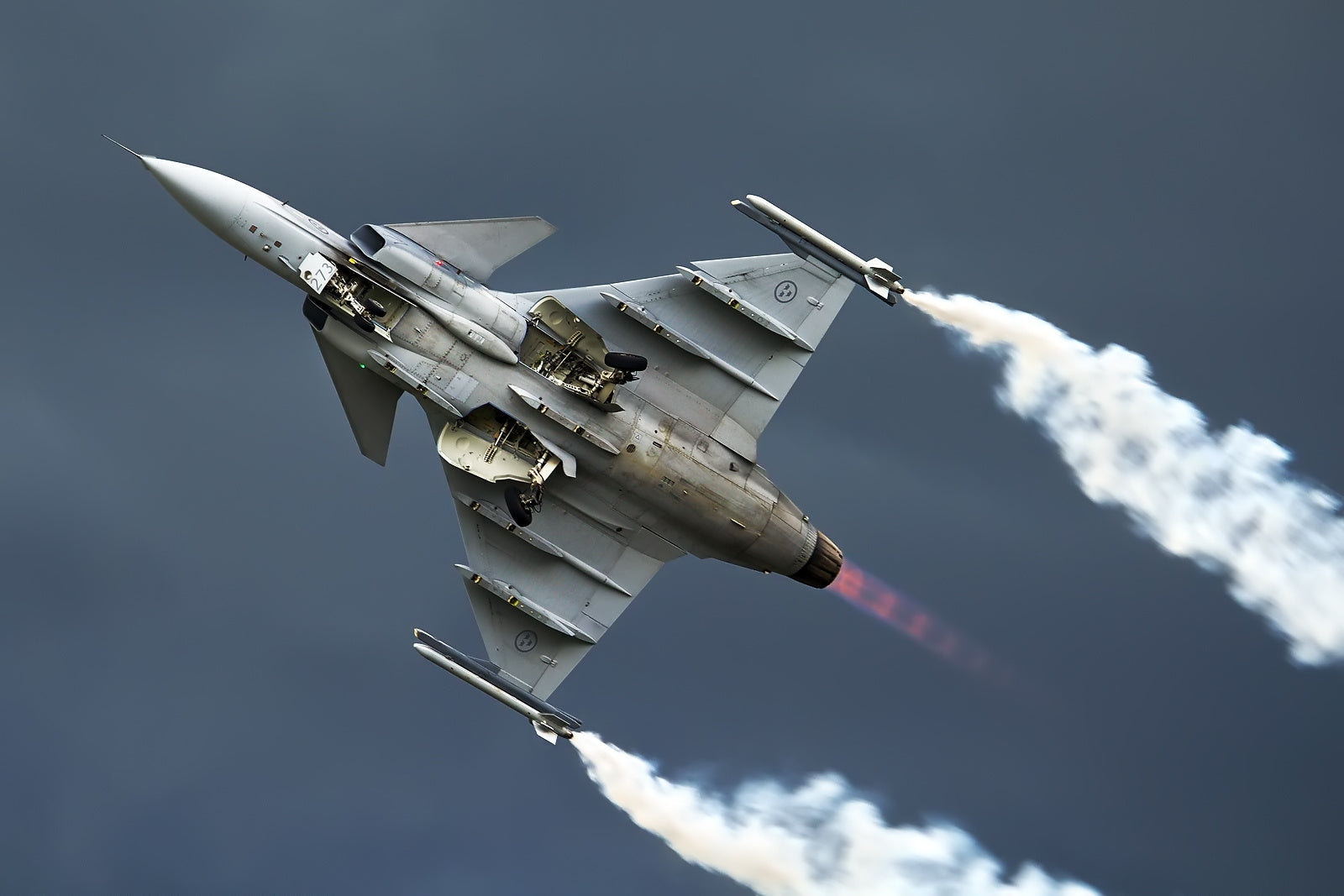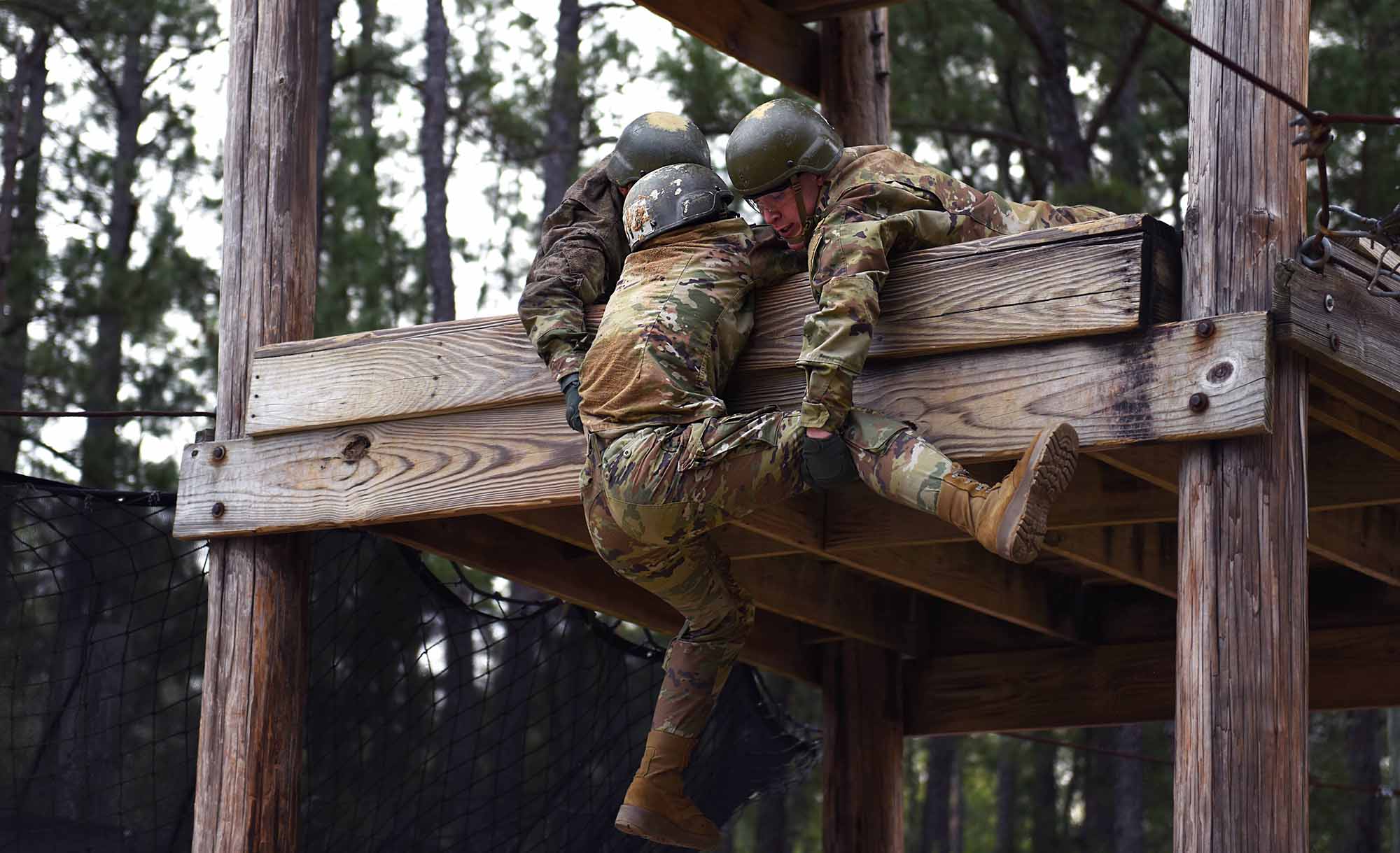Featured Image: Ukrainian combat training center engineers provide security for one of their fellow engineers who is placing an explosive charge on a door to breach it during training with Canadian and U.S. Army engineers to build their breaching skills, enabling them to teach those skills to Ukrainian army units who will rotate through the combat training center at the International Peacekeeping and Security Center, near Yavoriv, Ukraine, on Feb. 24. (Photo by Sgt. Anthony Jones, 45th Infantry Brigade Combat Team) Public domain
Contrary to popular belief, it was mud, not snow, which stopped the German invasion of the Soviet Union in 1941.
That same mud is on its way back, what the Russians call the rasputitsa (“muddy road”), as the Fall rains soak the Ukrainian plains ahead of what’s guaranteed to be a cold, dark winter.
As we approach Ukraine’s coldest season, it’s becoming clear now that the summer counter-offensive didn’t quite have the results everyone had hoped for.
Now, Ukraine faces the real possibility of a protracted stalemate – precisely the type of war that Russia was built for. Russia’s “tooth-to-tail” ratio favors slow, immobile slug fests as opposed to blitzkrieg-style attacks.
The tooth-to-tail ratio is the idea that it takes X amount of support soldiers to enable X number of infantrymen. In the U.S., this ratio is about 10-1; as in, it takes ten support personnel like medical, logistics, and cooks for every one U.S. Army infantryman to be combat effective.
The Russian military doesn’t have a significant support structure to speak of… At least, not one that functions as it should. We witnessed this firsthand when Russia tried to sprint to Kyiv at the war’s start only to find itself unsupported – out of gas and out of ammo.
However, Russia’s tooth-to-tail weakness doesn’t affect defensive operations, at least not as significantly, and so Russia is set up to fight exactly the war it is best equipped to fight.
Now reports are surfacing that U.S. and European officials have approached Ukraine to discuss the possibility of peace talks with Russia. To make matters worse, even the commander-in-chief of Ukraine’s own armed forces, Valerii Zaluzhnyi, said that the war had entered an impasse last week.
Perhaps sensing a change in the trade winds, Ukrainian President Zelenskyy rejected claims that the war with Russia has reached a stalemate in an exclusive interview with NBC News’ "Meet the Press" on Sunday.
But the reality is that with minimal forward momentum from the summer offensive, a divided U.S. Congress, and the start of the Israel-Hamas War, there is a general feeling in the intelligence community that the Ukraine War has turned into a slog.
A few weeks ago, I wrote about the ways that the Ukraine War could end – one of those was a protracted frozen conflict with Russia fortifying the current front line.
This usually happens when both sides are either evenly matched, or neither side is willing to make any decisive moves because of resource shortages or weather.
To put the icing on this proverbial shit cake, Ukraine is suffering its worst manpower shortages since the start of the war. This is an issue unique to Ukraine and no amount of Western military hardware will produce more able-bodied fighters for Zelenskyy.
If Russia has the entire winter to fortify the current front line with even more mines, fortifications, and troops, when spring comes it will be damn near impossible to eject the bastards from Ukrainian land.
And with impeccable comedic timing, Russia responded to Zaluzhnyi’s impasse comments by stating that “the war has not reached a stalemate.”
Of course, Russia would say this, because to admit to a stalemate is to admit that the Ukrainian military is evenly matched with the mighty Russian war machine.
So, what can Ukraine do to avoid this frozen conflict that’s on the horizon?
There are several things that, if combined, could dislodge the persistent Russian bed bugs from Ukraine’s sheets.
First up is ongoing Western military support – specifically modern fighters and ground-attack aircraft.
One of the reasons this war has more in common with the trench warfare of World War I than a modern war is because of the lack of air superiority on either side.
This restrictive flying environment has forced both sides to use their air forces more conservatively than NATO is used to.
On the Russian side, they have more modern aircraft – or at least more recently upgraded aircraft – but lack the doctrinal ability or pilot experience to execute SEAD missions against Ukraine. As a reminder, SEAD is the Suppression of Enemy Air Defense.
As a result, Ukraine swats the Russian flys anytime they venture too deep into Ukraine’s interior.
On the Ukrainian side, they have Western training and quickly evolving doctrine to make life hell for the Russians on the ground, but they lack modern aircraft that can do the job effectively.
This is why so many of us Ukraine supporters are excited about the prospect of Ukraine getting its hands on the F-16. Granted, the F-16 is a four-decade-old fighter, but it’s still exponentially better than anything Russia is flying at the moment.
Modern fighters could empower Ukraine to finally achieve air superiority over portions of the front line. This, in turn, would allow Ukraine’s forces to advance without the threat of enemy artillery or Russian helicopter gunships.
They would still have to contend with the mines, though…
Which leads me to my next point:
Ukraine needs more mine-clearing equipment.
Months before Ukraine began to talk about a counter-offensive, Russia began laying hundreds of thousands, perhaps millions, of mines.
Ukraine is now the most heavily mined country on the planet.
Admittedly, Russian warfighting doctrine calls for heavy mine use, but what they’ve done in Ukraine is on another level.
If Ukraine is to advance through these mined hellscapes to break through Russia’s fortifications, they need 10x more mine-clearing equipment than they currently have.
There are a lot of options here that the U.S. could send, and any of them is better than the traditionally brutal and manual task of clearing a minefield: Usually a few combat engineers with metal detectors and sticks.
The U.S. Army has the M160: a remote-operated light flail system designed to provide engineers with line-of-sight unmanned mine-clearing operations.
The M160 clears mines by using the flailing motion of high-speed, rotating chained hammers. The machine digs and powders soil up to a depth of two inches depending on soil type. The digging action often results in the detonation or shattering of anti-personnel mines.
What’s more, the M160 itself is heavily armored and protected from mine explosions.
In August, the U.S. sent Ukraine some mine-clearing equipment, however, it’s not clear what exactly they sent from the Pentagon’s press release.
But the real power of the mine-clearing equipment comes when it is used in conjunction with air power and a coordinated attack with armored vehicles and combat troops.
Next, Ukraine could benefit from an upgrade to its electronic warfare (EW) capabilities.
During the first year of fighting, Russia was constantly on the back foot with EW, including using unsecured communications, lapses in operational security on social media, and an inability to stop Ukrainian drones.
Now, Russia’s EW capability has matured to the point where it is getting increasingly difficult for Ukraine to take advantage. Although they have yet to crack the Starlink enigma. Starlink is the satellite internet system designed by SpaceX and donated to Ukraine. So far, Russian soldiers have been unable to zero in on Ukrainian soldiers using Starlink terminals, but it’s only a matter of time.
Fortunately, the U.S. military just signed an agreement with SpaceX for “Starshield,” a militarized (hardened) version of Starlink.
Because Starlink is civilian-controlled, Ukraine has been hesitant to update its area of operations (AO) ahead of an assault. For instance, if Ukraine wants to assault a village, they will do so without internet communication and only update the service area after the assault is over! They do this because they fear their plans will be leaked by someone at SpaceX, or perhaps even Musk himself.
With Starshield coming online for the U.S. military, Ukraine would no longer have to assault in a communications blackout.
As a former infantryman, I can tell you how terrifying it must be to lose communications at a crucial time when you need it the most – assaulting through the objective. And Ukraine has been doing this intentionally to avoid their plans leaking to the Russians ahead of time.
Finally, Ukraine needs the ability to mobilize and train more reserves.
As I said before, no amount of Western military hardware is going to solve Ukraine’s manpower shortages.
It’s not exactly clear how many Ukrainian soldiers have lost their lives protecting their homeland, but it’s safe to say that Russia has more human personnel to draw from.
Even if Ukraine can mobilize reserves quickly, there is still the issue of “skilled troops.” The experienced veterans and Ukrainians with specialized knowledge are being replaced by reserves who simply don’t have the training or experience.
In turn, this makes the Ukrainian military as a whole, weaker.
In this sense, perhaps a winter break in fighting is exactly what Ukraine needs to get recently mobilized reserves trained up on Western military equipment. But this is a double-edged sword as Russia would use the lull in fighting to their advantage also.
No matter how this winter plays out, I believe that President Zelenskyy will reject any talks of peace until Russia removes its troops from a significant portion of Ukrainian land.
As Ukraine’s elected President, he will have the final say on if and when peace negotiations with Putin take place. And I believe that at this stage, there is still plenty of fight left in Ukraine.
What Russia has done to Ukrainian civilians alone can never be forgiven.
In the meantime, what can we do to help Ukraine?
If you’re an American, you can call your Congressperson and demand that aid to Ukraine continue. The U.S. government must keep momentum in supporting Ukraine in front of our European allies.
The Israel-Hamas War can and will distract many in the U.S. government away from Ukraine’s plight.
But both wars are equally important as both wars are a fight for survival.
Frozen conflicts can stay that way for decades – just look at the situation in North Korea. It’s essential we not allow this barbaric invasion of Ukraine to devolve into a stalemate where the current front line turns into Ukraine’s new proxy border with Russia.
Failing here means sending a signal to every authoritarian in the world that if you make a land grab, as long as you can keep it, it’s yours forever.
Naked aggression must be punished. Ukraine must be empowered to fight through the winter and America can help make that happen.
Слава Україні




